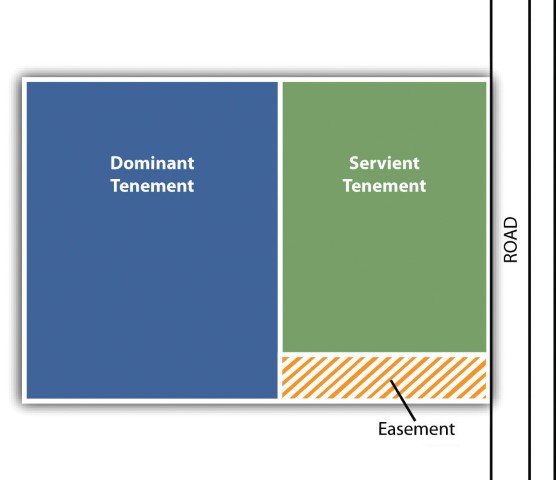May 15th 2019
An easement is the right of use or entry upon lands you do not possess for a limited purpose. Commonly expressed as a “right of way”, home purchasers should know how easements may impact their intended use  of a property. While some easements may be minor and do not typically interfere with the homeowner’s use or enjoyment, other easements can restrict a homeowner’s plans significantly and can lead to costly disputes or corrective measures if overlooked.
of a property. While some easements may be minor and do not typically interfere with the homeowner’s use or enjoyment, other easements can restrict a homeowner’s plans significantly and can lead to costly disputes or corrective measures if overlooked.
Easements are created to make a parcel of land more valuable or convenient. The land improved by the easement is known as the “dominant tenement”, and the other is known as the “servient tenement”. The servient tenement cannot restrict the dominant tenement from the use or benefit of the easement. Once created, the easement remains with the property, meaning every subsequent owner of the land has the same rights or obligations. While there are different ways an easement can be created or recognized in law, parties may expressly grant the easement in a deed following the purchase and sale of property. For example, Sam owns plot A and B, and is negotiating the sale of B to Frank. While there is a bridge that connects B to the main road, Sam agrees to allow Frank the use of the driveway in A in order to access B. The grant of the easement is recorded in the deed at the time of the transfer. Frank now benefits  from the convenience of crossing over A to access his property B.
from the convenience of crossing over A to access his property B.
Private individuals are not the only entities that can rely on easements to access property. Utility providers such as water, telephone, and hydro services are commonly allowed to perform maintenance and repairs through lawful easement. Municipal easements allow for the maintenance and service of subdivisions or lots in their development. Some easements such as hydro may even be unregistered. These easements are minor in that the homeowner is only burdened with infrequent access over their land for the purpose of maintenance. It is standard for a purchaser to accept title subject to such “minor easements” as they do not materially affect the homeowner’s use. However, minor easements may still cause headaches, such as when a structure is placed unknowingly over underground telephone lines and must be removed to allow for service.
One issue that comes before the courts relates to the intention of the parties when the easement was  created. Does the language of the easement at the time it was drafted permit modern uses? If it was created to facilitate access to lands by horse and buggy, does this now permit vehicles? What about large farming machinery? Alternatively, the servient tenement may wish to build a structure on their property that would prevent something as large as a truck and trailer from passing through, but it would not restrict a sedan. Can it be done? When disputes arise, a property owner may negotiate with the party who’s been granted the easement to consent to its removal or ask the court to clarify its breadth. Either way, dealing with the easement could be costly.
created. Does the language of the easement at the time it was drafted permit modern uses? If it was created to facilitate access to lands by horse and buggy, does this now permit vehicles? What about large farming machinery? Alternatively, the servient tenement may wish to build a structure on their property that would prevent something as large as a truck and trailer from passing through, but it would not restrict a sedan. Can it be done? When disputes arise, a property owner may negotiate with the party who’s been granted the easement to consent to its removal or ask the court to clarify its breadth. Either way, dealing with the easement could be costly.
When purchasing a new property, it is always better to work with a real estate professional who can help you understand your rights and obligations with respect to any easements before signing an agreement.
Michael Liddiard, JD | Liddiard Law Professional Corporation | michael@liddiardlaw.ca